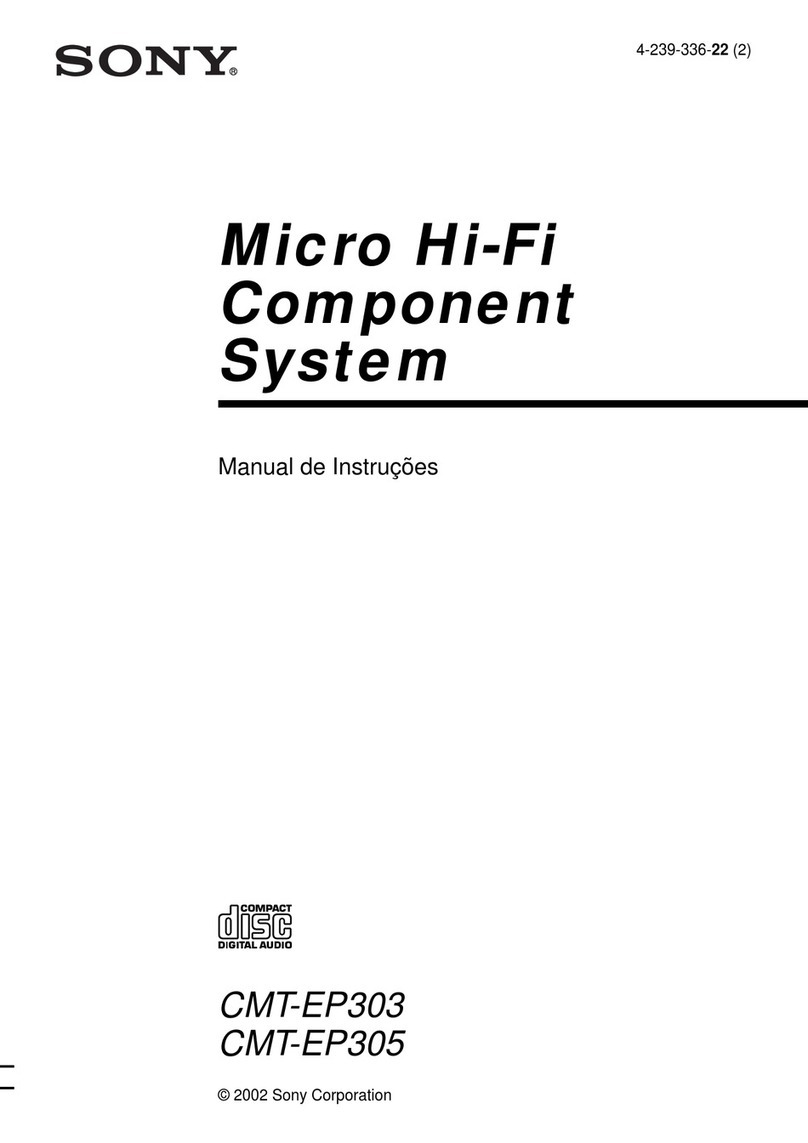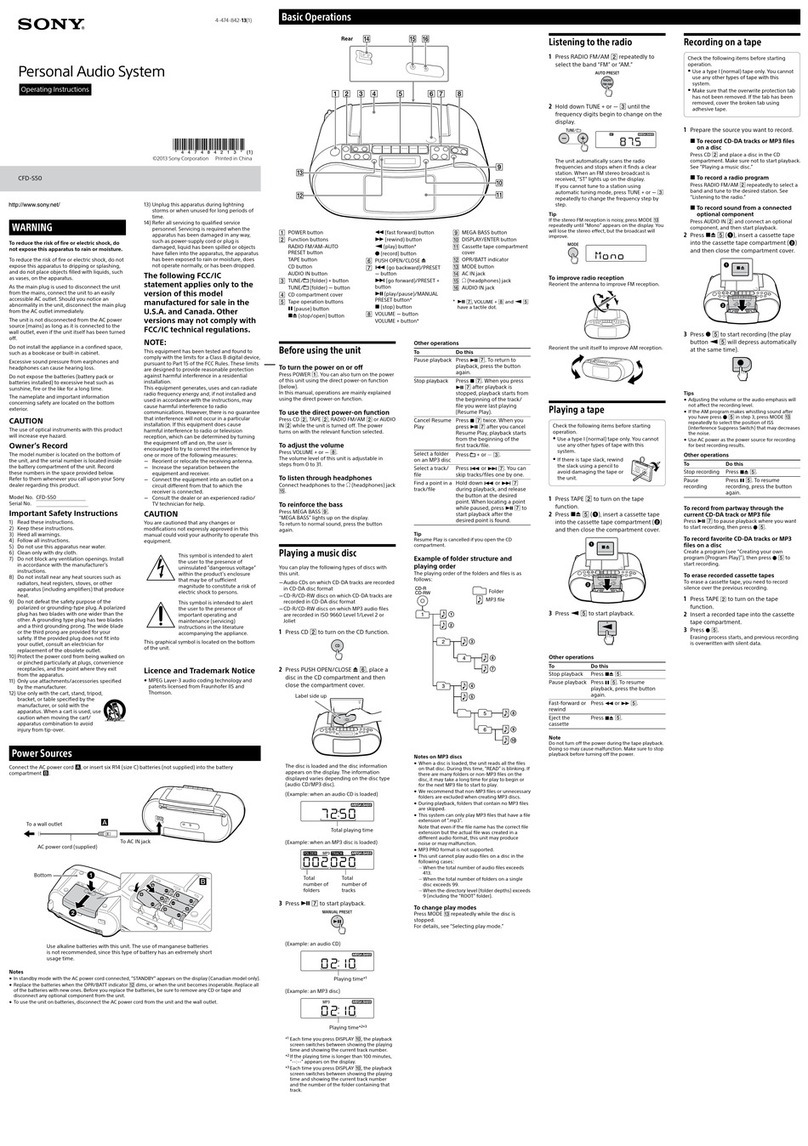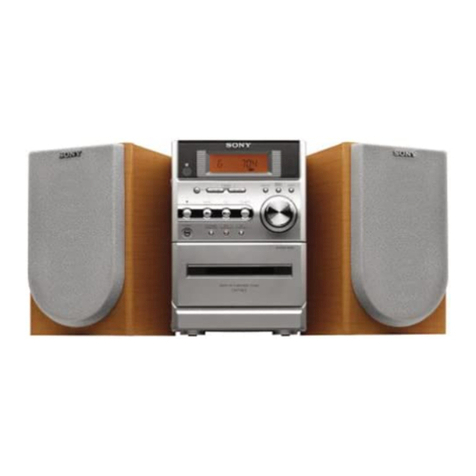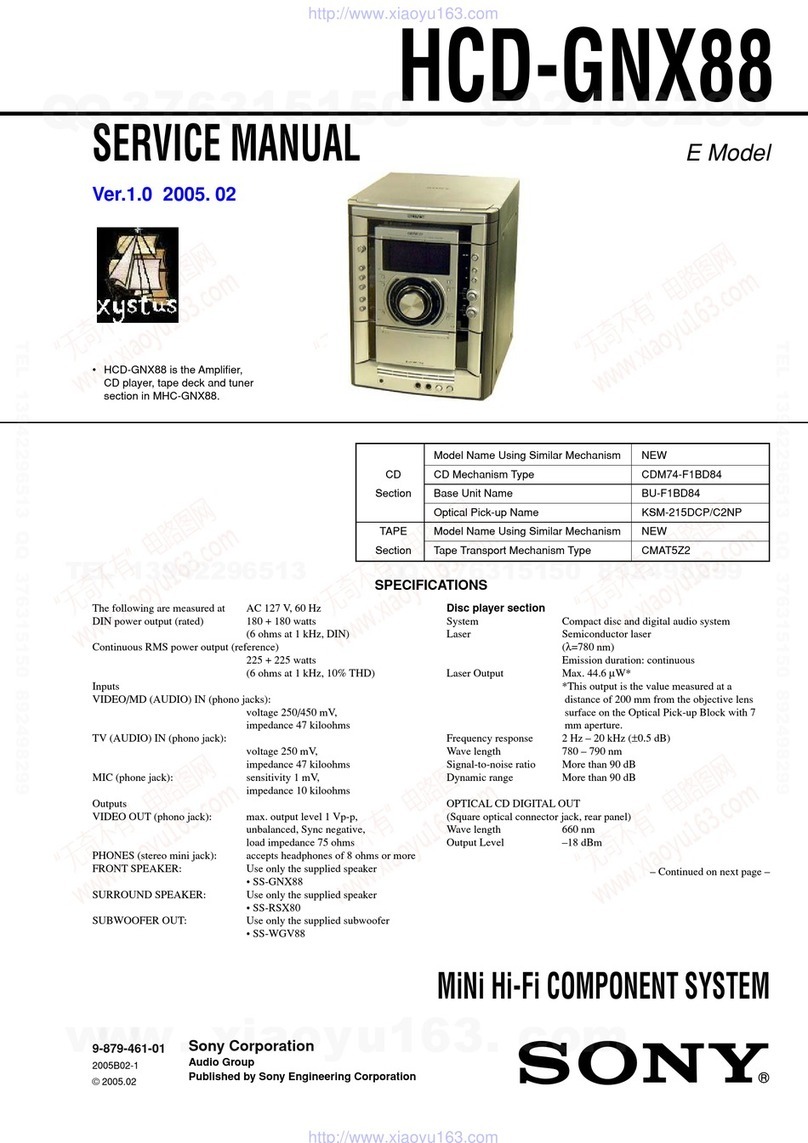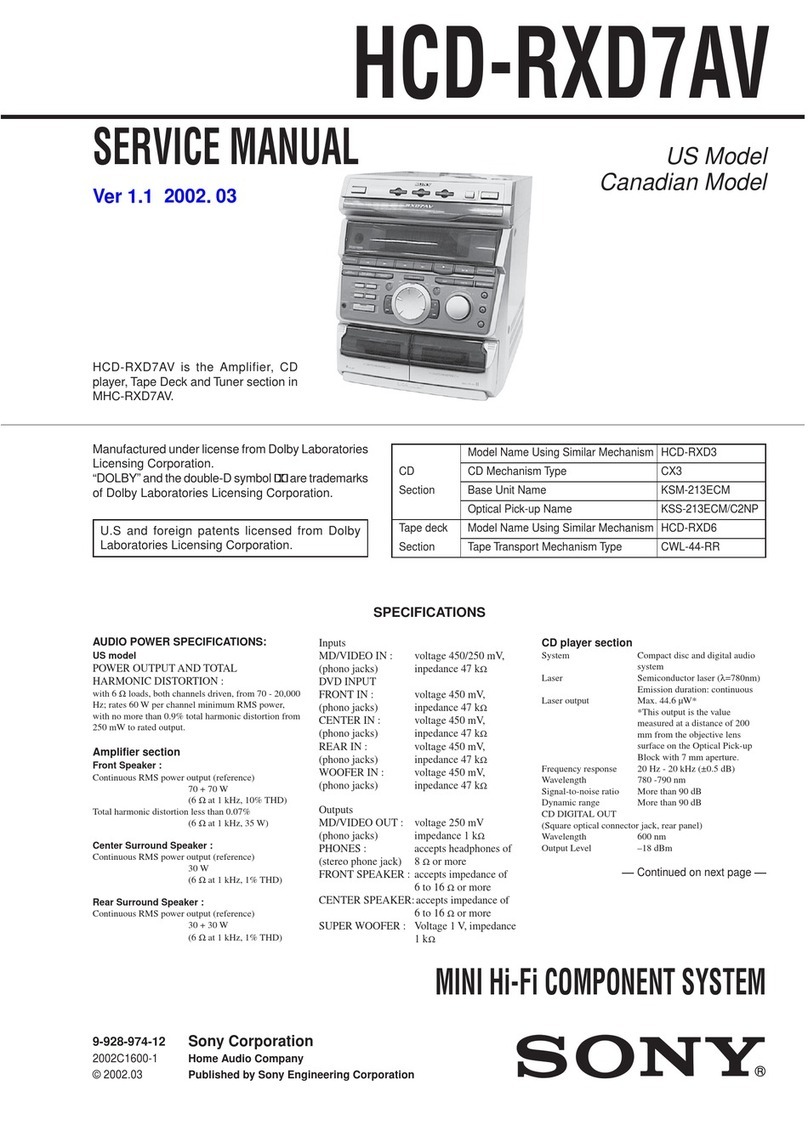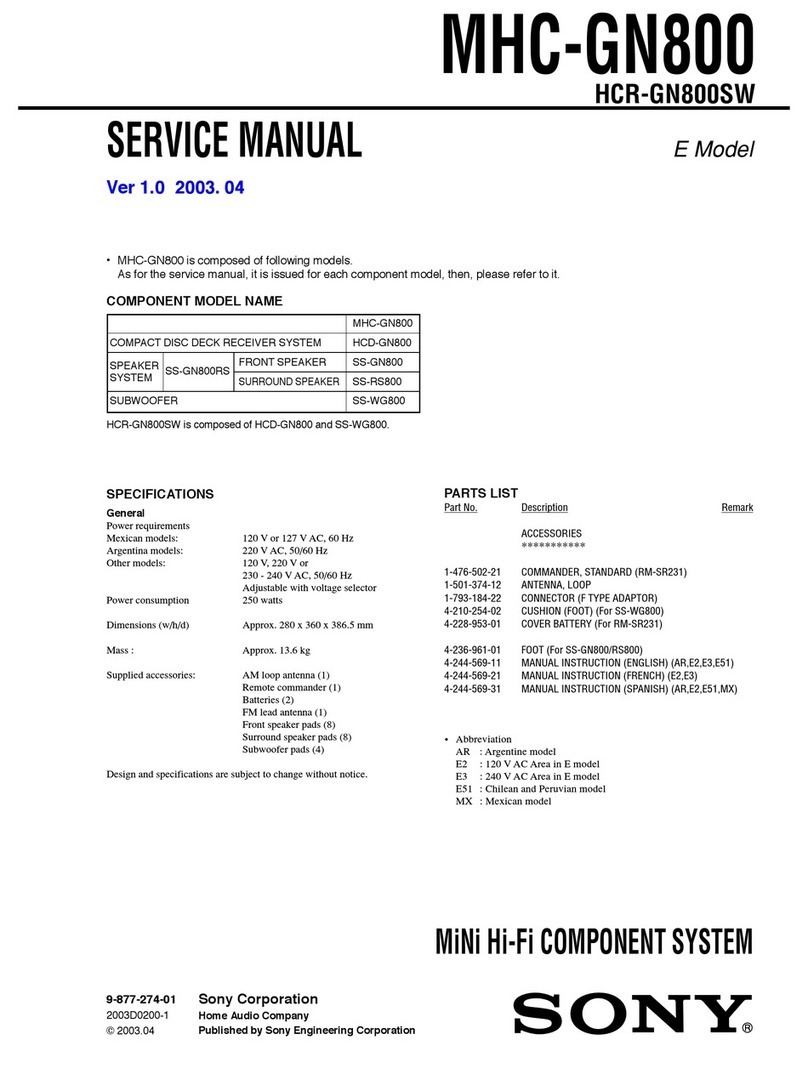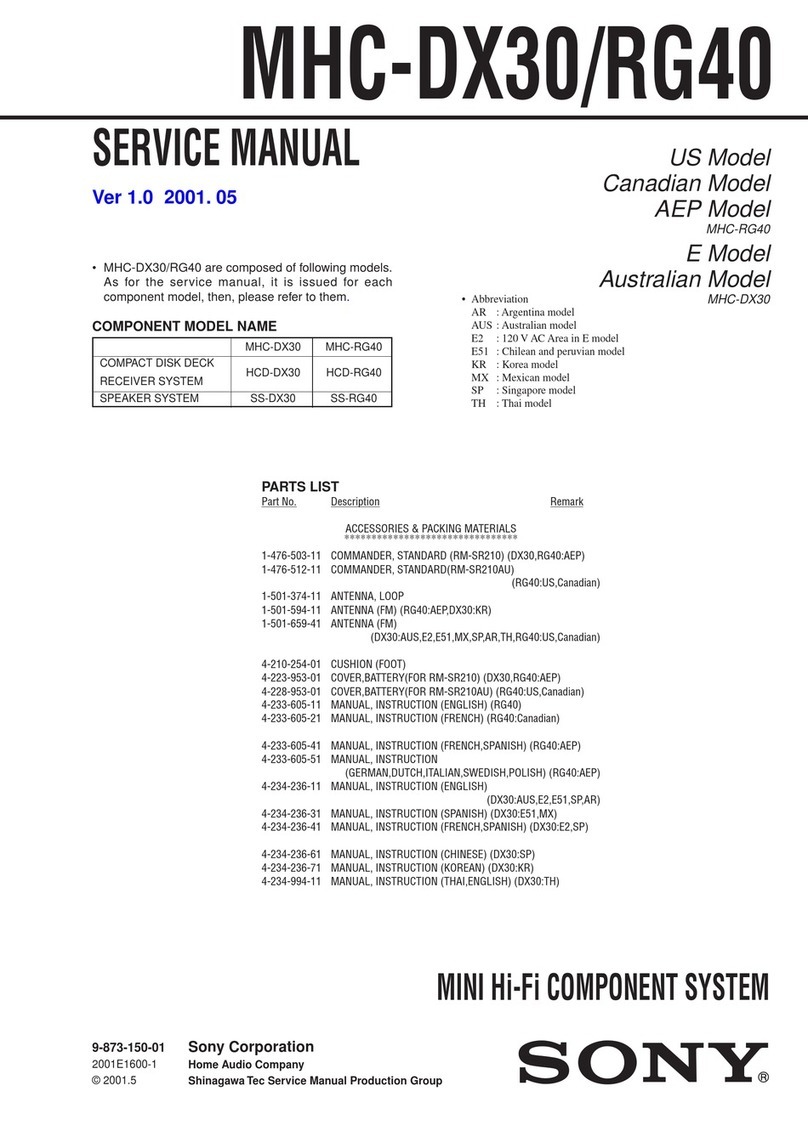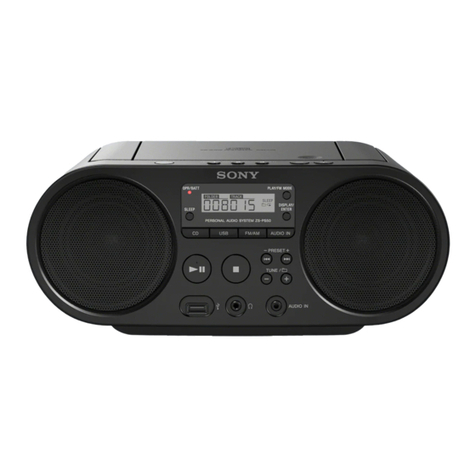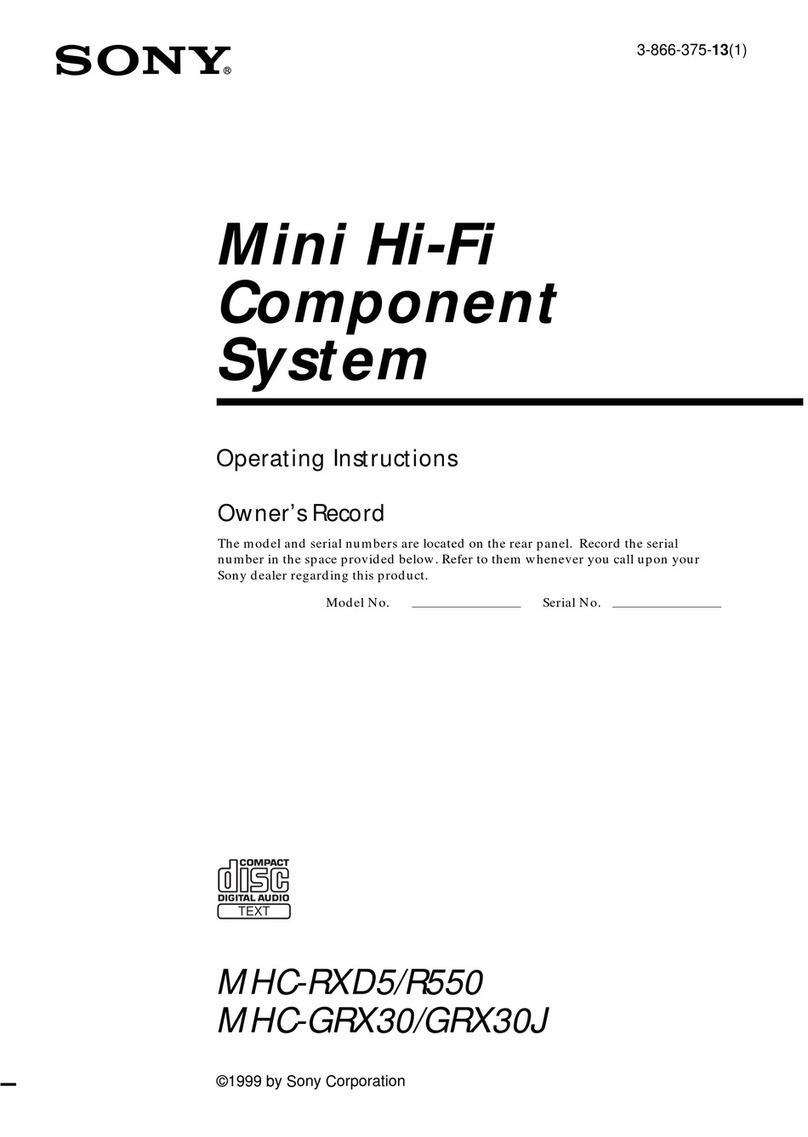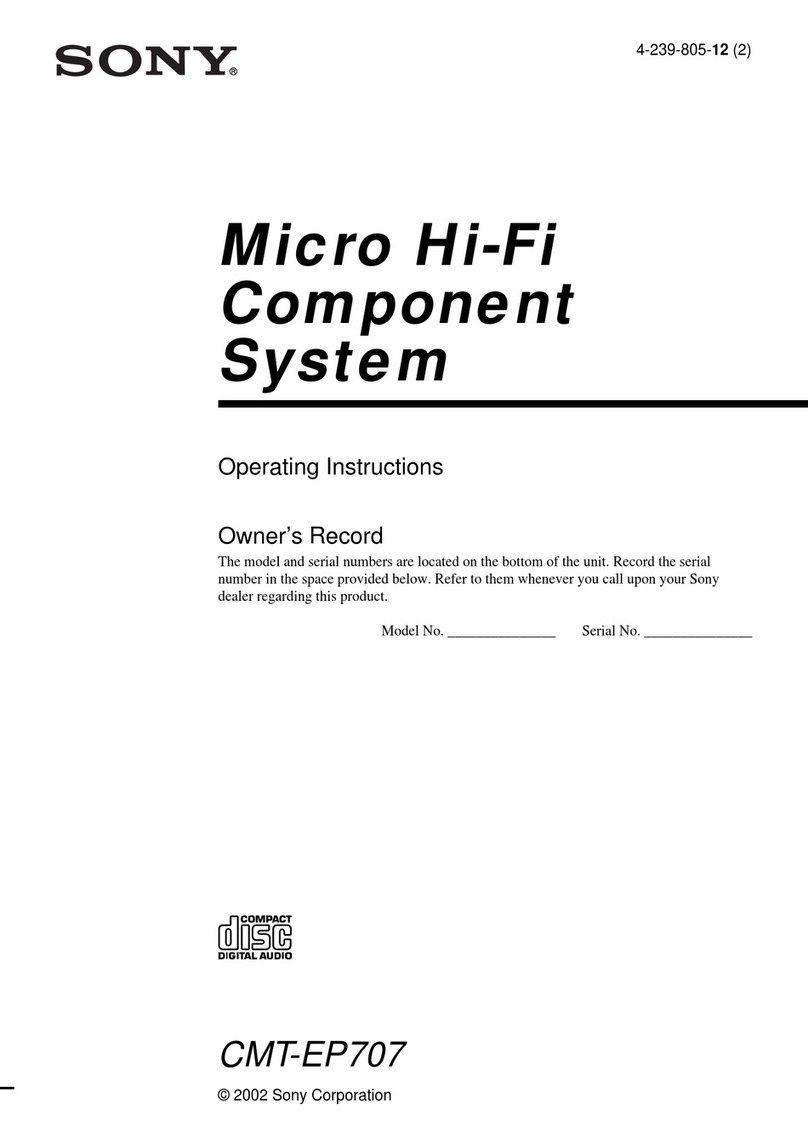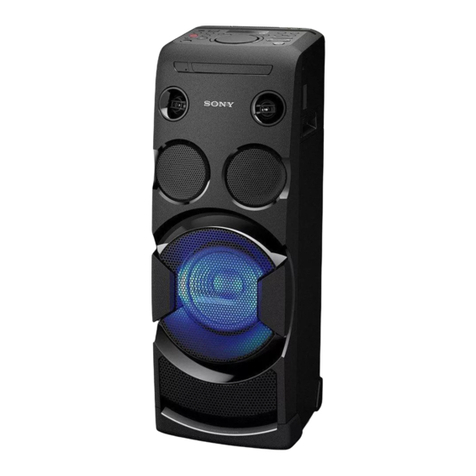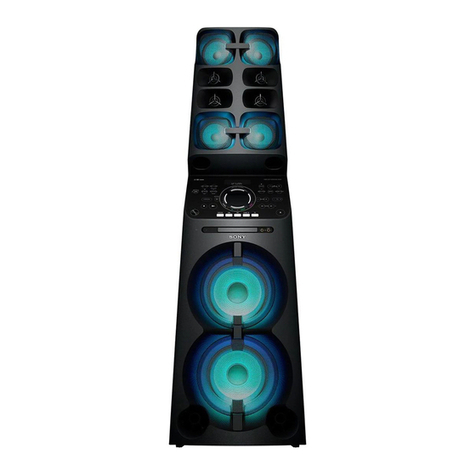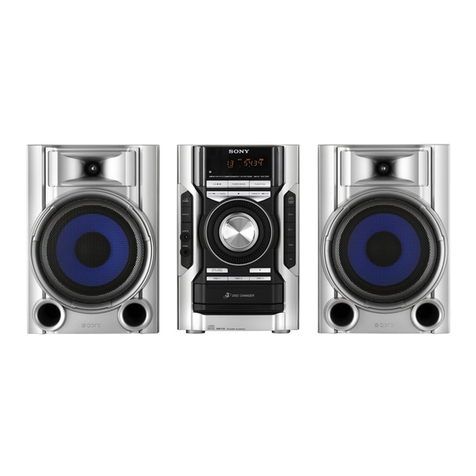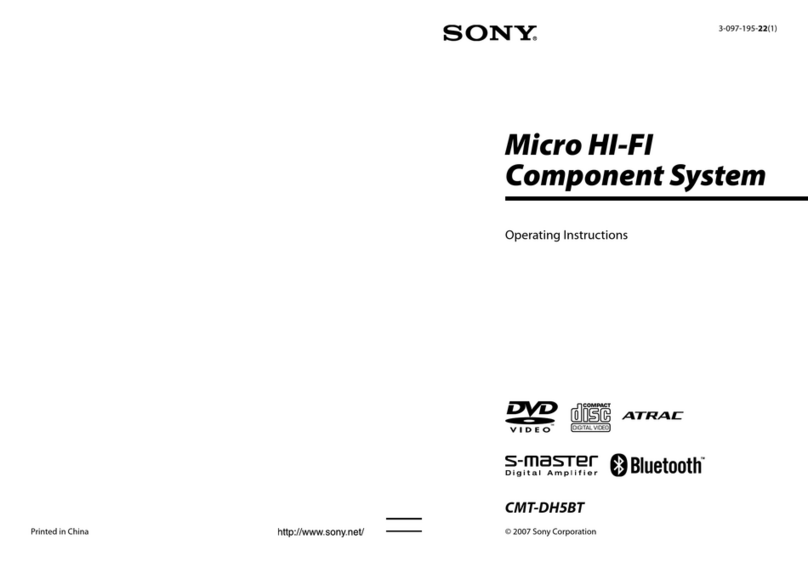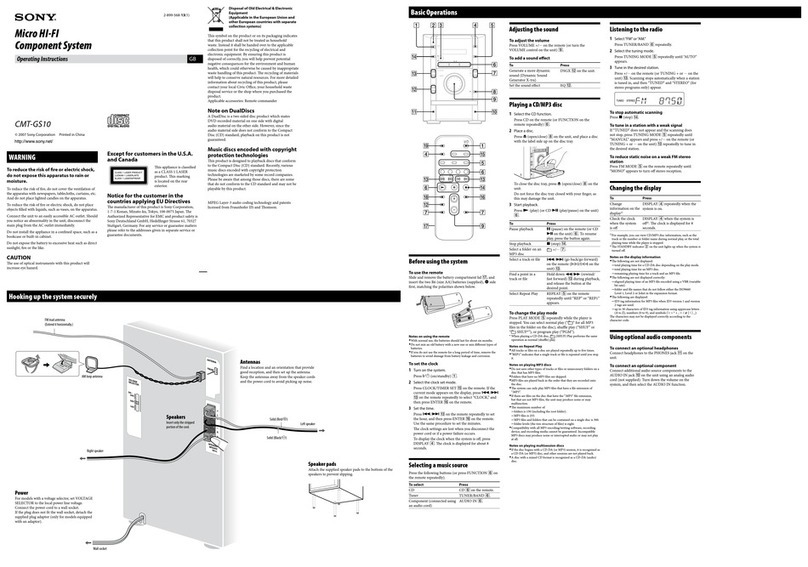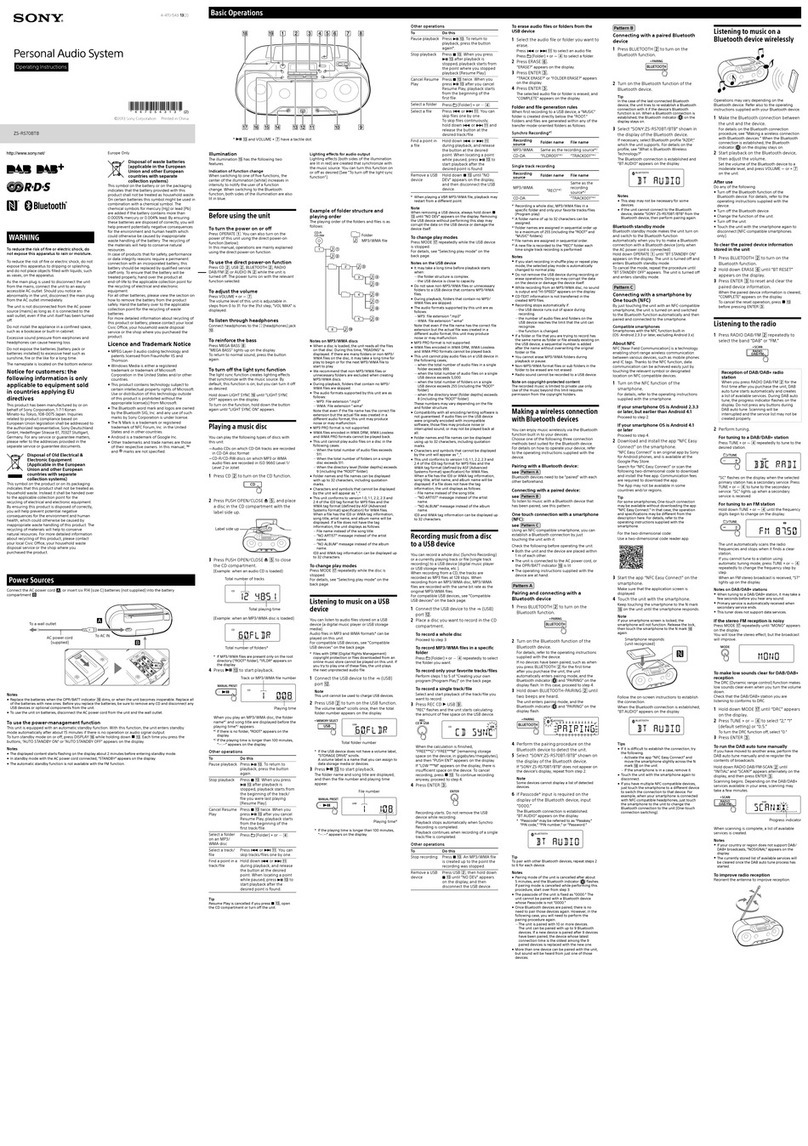— 3 —
TABLE OF CONTENTS
1. GENERAL ·········································································· 4
2. DISASSEMBLY
2-1. CD Door ············································································· 5
2-2. CD Mechanism Deck ························································· 6
2-3. Front Panel ········································································· 6
2-4. Main Board········································································· 7
2-5. Front Board········································································· 7
2-6. CD Tray ·············································································· 8
2-7. CD Decord Board ······························································· 8
2-8. Base Unit ············································································ 9
2-9. Cassette Lid (L) / (R)·························································· 9
3. TEST MODE···································································· 10
4. MECHANICAL ADJUSTMENTS ····························· 11
5. ELECTRICAL ADJUSTMENTS ······························· 11
6. DIAGRAMS
6-1. Circuit Boards Location ··················································· 16
6-2. Block Diagrams ································································ 17
•Tuner, CD Section ························································· 17
•Main Section·································································· 19
6-3. Printed Wiring Board – CD Decoder Section – ··············· 23
6-4. Schematic Diagram – CD Decoder Section – ·················· 25
6-5. Printed Wiring Board – Front Section – ··························· 27
6-6. Schematic Diagram – Front Section –······························ 29
6-7. Printed Wiring Board – Main Section – ··························· 31
6-8. Schematic Diagram –Main (1/4) Section – ······················ 33
6-9. Schematic Diagram – Main (2/4) Section – ····················· 35
6-10. Schematic Diagram – Main (3/4) Section – ····················· 37
6-11. Schematic Diagram – Main (4/4) Section – ····················· 39
6-12. IC Pin Function ································································ 41
6-13. IC Block Diagrams ··························································· 43
7. EXPLODEDVIEWS
7-1. Cabinet Section································································· 47
7-2. Front Panel Section ·························································· 48
7-3. CD Mechanism Deck Section-1 ······································· 49
7-4. CD Mechanism Deck Section-2 ······································· 50
7-5. Base Unit Section (KSM-213ECM)································· 51
8. ELECTRICAL PARTS LIST ······································· 52
